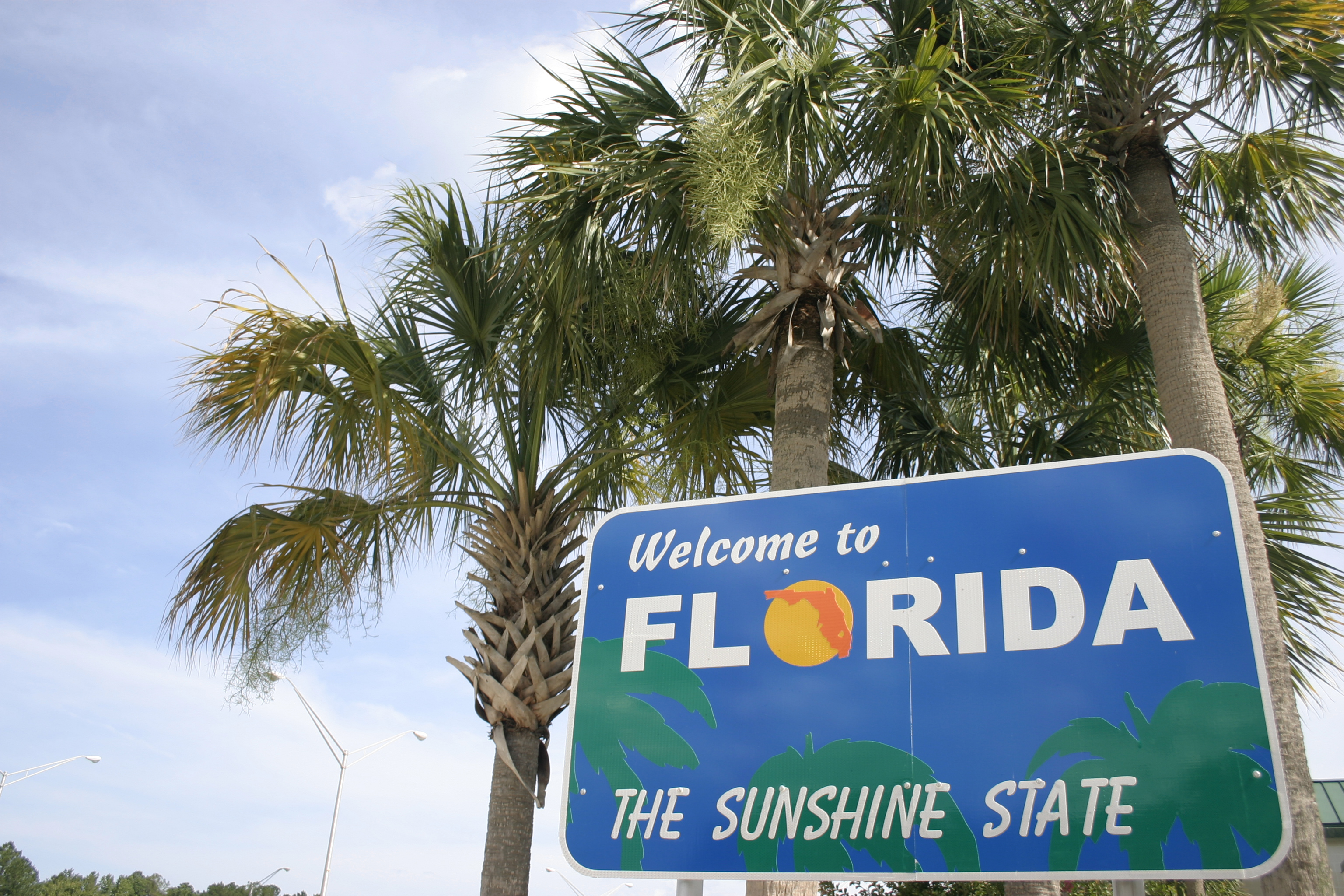Project 2025 Tax Overhaul Blueprint: What You Need to Know
Some people wonder about Project 2025 and its proposals for the IRS, income tax brackets, tax cuts, and capital gains tax rates, especially now that Trump is making sweeping changes that mirror the playbook.


If you’ve been on social media or tuned into the news lately, you may have heard about Project 2025, a controversial policy blueprint developed by the Heritage Foundation. The 900-page mandate from the conservative think tank is getting attention for its eyebrow-raising proposals that now seem to mirror much of Donald Trump's second-term policies.
The legal organization Democracy Forward has described Project 2025 as "among the most profound threats to the American people."
On its website, the Heritage Foundation says of its plan, "It's past time to lay the groundwork for a White House more friendly to the right."

Sign up for Kiplinger’s Free E-Newsletters
Profit and prosper with the best of expert advice on investing, taxes, retirement, personal finance and more - straight to your e-mail.
Profit and prosper with the best of expert advice - straight to your e-mail.
The significant changes presented in the four pillars of Project 2025, designed for the current Republican administration, would fundamentally alter the federal government. That includes everything from public education and the Federal Reserve to the IRS and the United States tax system.
It should be noted that Donald Trump tried to distance himself from the policy document during his election campaign, saying he hadn't read it. But several recent analyses indicate that many of Trump's early presidential executive and policy actions align with the playbook. (More on that later.)
However, taxes and tax policy were already set to be a major issue this year. Several key provisions of the Tax Cuts and Jobs Act (TCJA, also commonly referred to as the “Trump tax cuts”) are scheduled to expire at the end of 2025.
So, with Trump in the White House for his second term as president, it is important to be informed about various proposals that could impact your finances — including those in Project 2025.
What does Project 2025 say about taxes?
Regarding taxes, Project 2025 provides for several significant changes, some of which are summarized below.
Income tax rates
Changing to two income tax rates: 15% and 30%
Currently, there are seven different income tax rates: 10%, 12%, 22%, 24%, 32%, 35%, and 37%. These marginal rates are tied to inflation-adjusted federal income tax brackets.
Chapter 25 of the project's “Mandate for Leadership,” states, “The Treasury should work with Congress to simplify the tax code by enacting a simple two-rate individual tax system of 15 percent and 30 percent that eliminates most deductions, credits and exclusions.”
The Project 2025 playbook suggests that the 30% tax rate should begin “at or near the Social Security wage base,” currently $176,100.
- Critics contend that such a drastic tax rate simplification might not account for varied individual financial situations.
- There are also concerns that two tax rates and eliminating deductions and credits would be less fair, increasing the tax burden on middle-income earners.
Some question whether a two-rate system would lead to a loss of federal revenue.
Capital gains tax rate
Imposing a 15% tax on capital gains and dividends
Advocates suggest this would incentivize investment and entrepreneurship. However, those opposed argue a 15% capital gains tax rate is too low. This is tied to existing concerns that lower capital gains rates disproportionately benefit the wealthy and that cutting capital gains tax rates can lead to a loss of government revenue.
Additionally, some argue that maintaining a separate capital gains tax rate alongside ordinary income rates works against simplifying the tax code.
'Trump tax cuts'
Extending and expanding the 2017 Tax Cuts and Jobs Act
Supporters argue that this would stimulate economic growth. However, critics point to studies suggesting that these cuts have contributed to the national debt. (The Congressional Budget Office estimates that extending the 2017 tax cuts alone would increase the deficit by $4.6 trillion by 2028.)
Another concern is data indicating that nearly half of the tax benefits in the TCJA have benefited the top 5% of U.S. taxpayers.
Aside from potentially adding to wealth inequality, it would be difficult to maintain the 2017 tax cuts without significant reductions in federal spending.
Overtime pay
Giving employers more flexibility to calculate overtime
You might be wondering what overtime pay has to do with taxes. Well, President Trump has floated the idea of no taxes on overtime pay. The proposal is estimated by the Tax Foundation to cost at least $145 billion over the next ten years.
Regarding overtime, Project 2025 states, “Congress should provide flexibility to employers and employees to calculate the overtime period over a longer number of weeks.”
The Center for American Progress has said that approach would "put more power in the hands of employers to exploit employees.”
Corporate tax rate
Lowering the corporate tax rate from 21% to 18%
Supporters have argued that this reduction might stimulate economic growth by encouraging business investment and job creation. They also contend that a lower corporate tax rate would make the U.S. more competitive, potentially attracting foreign investment.
Meanwhile, opponents worry that reducing the corporate tax rate could significantly reduce government revenue.
There’s also the longstanding debate over studies showing limited economic benefits associated with corporate tax cuts. Additionally, some say that lowering corporate taxes shifts the tax burden to individuals and encourages tax avoidance.
Project 2025 plans
In different “reform stages,” Project 2025 proposals include eliminating individual and corporate income taxes in favor of a consumption tax.
Proponents argue this would simplify the tax system and encourage saving and investment. However, critics warn that such a shift could burden people with lower and middle incomes who spend more on essential goods and services.
Project 2025 also proposes significant changes to the IRS, including budget cuts and increased presidential appointments within the agency.
Additionally, the project advocates a three-fifths vote threshold for future tax increases. In an “intermediate tax reform” stage, the project would repeal the clean energy tax breaks and “all tax increases passed as part of the Inflation Reduction Act.”
While supporters argue changing the IRS would reduce government overreach, opponents worry it could hamper the agency's ability to enforce tax laws and collect revenue effectively. (The IRS has recently increased its compliance efforts relative to high earners and large corporations.)
Beyond taxes, Project 2025 proposes other sweeping changes, including but not limited to:
- Eliminating various federal agencies, including the U.S. Department of Education
- Restricting abortion access
- Increasing presidential authority
- Cutting federal funding for renewable energy research
- Implementing stricter immigration policies
Trump executive orders mirror Project 2025 agenda
While the White House maintains that Trump "had nothing to do with Project 2025", striking similarities between Trump's actions and Project 2025’s proposals suggest otherwise. For example, CBS News identified at least 270 proposals in Project 2025 that match Trump's past policies and current campaign promises.
These areas span multiple policy concerns, including immigration, environmental regulation, government restructuring, and approaches to diversity and inclusion in federal agencies.
- For instance, Trump's moves to restrict refugee admissions and withdraw from international climate agreements align with Project 2025's recommendations.
- Similarly, his efforts to reduce the federal workforce and reassert executive authority echo key objectives of the project.
- The administration's focus on deregulation and its stance on diversity, equity, and inclusion programs in government also parallel Project 2025 proposals.
While not every action Trump has taken early in his second presidency fully aligns with the project blueprint, the extent of overlap suggests that the initiative influences the administration's policies.
Additionally, when it comes to taxes, there are some areas where Trump’s actions so far align with Project 2025:
IRS Restructuring: The administration has taken steps to reduce the IRS budget and increase political appointments within the agency, aligning with Project 2025 recommendations. As Kiplinger has reported, Trump implemented a hiring freeze, which could last longer at the IRS than for other agencies.
Trump also signed the "Unleashing American Energy" order, which targets electric vehicle tax incentives and pauses the disbursement of Inflation Reduction Act funds related to climate change. He also has temporarily frozen all regulatory action.
Opposition to Global Minimum Tax agreements: Trump has maintained his stance against international tax agreements, which aligns with Project 2025's position. On his first day in office, Trump effectively pulled the United States out of the global tax agreement, the OECD Global Tax Deal or Two-Pillar Solution.
Note: Some actions may face legal challenges or require congressional approval for full implementation.
Also, Project 2025’s influence on the federal government extends beyond executive orders. For example, Trump has filled key government posts with people who helped put Project 2025 together.
Russ Vought, chosen by Trump to be the director of the Office of Management and Budget (OMB), wrote a section on presidential power that appeared to preview the Trump administration's freeze on federal spending. That freeze has since been rescinded and is the subject of ongoing litigation.
Project 2025 taxes: Bottom line
Project 2025 is seen as a conservative (some say "radical") roadmap for overhauling federal government structure and policy for the current Republican White House administration.
Supporters argue that proposed tax "reforms" would simplify the tax code and boost economic growth and competitiveness. (*Revenue estimates don't appear in the Project 2025 playbook.)
However, opponents warn of negative consequences including increased income inequality, ballooning national debt, reduced government capacity to provide essential services, and unchecked authority.
In any case, and especially in the current highly charged political environment, it’s important to remain informed about potential tax changes that could affect your finances.
Related
Get Kiplinger Today newsletter — free
Profit and prosper with the best of Kiplinger's advice on investing, taxes, retirement, personal finance and much more. Delivered daily. Enter your email in the box and click Sign Me Up.

As the senior tax editor at Kiplinger.com, Kelley R. Taylor simplifies federal and state tax information, news, and developments to help empower readers. Kelley has over two decades of experience advising on and covering education, law, finance, and tax as a corporate attorney and business journalist.
-
 The Best Places for LGBTQ People to Retire Abroad
The Best Places for LGBTQ People to Retire AbroadLGBTQ people can safely retire abroad, but they must know a country’s laws and level of support — going beyond the usual retirement considerations.
By Drew Limsky Published
-
 Financial Planning's Paradox: Balancing Riches and True Wealth
Financial Planning's Paradox: Balancing Riches and True WealthWhile enough money is important for financial security, it does not guarantee fulfillment. How can retirees and financial advisers keep their eye on the ball?
By Richard P. Himmer, PhD Published
-
 Free IRS Tax Filing for 30 Million People: Will It Continue Under Trump?
Free IRS Tax Filing for 30 Million People: Will It Continue Under Trump?Tax Filing Direct File was piloted last year in 12 states and has since expanded to 25. But some wonder whether the program will last under the Trump administration.
By Gabriella Cruz-Martínez Last updated
-
 Kentucky Tax Deadline Extension Might Cost You More Money: What to Know
Kentucky Tax Deadline Extension Might Cost You More Money: What to KnowState Taxes Kentucky flooding and storms caused the IRS and state to extend the 2025 tax filing deadline. But should you file later?
By Kate Schubel Published
-
 Could Your State End Tax on Overtime This Year?
Could Your State End Tax on Overtime This Year?State Taxes Key states are considering ending taxes on overtime — find out if yours makes the cut.
By Kate Schubel Published
-
 Did Florida’s Chance at $1,000 in Property Tax Rebates Vanish?
Did Florida’s Chance at $1,000 in Property Tax Rebates Vanish?State Taxes The Florida Legislature bypassed Gov. Ron DeSantis’ wish to cut property taxes and instead voted to lower the state’s sales tax.
By Gabriella Cruz-Martínez Published
-
 How Caregivers for Adults Can Save on Taxes in 2025
How Caregivers for Adults Can Save on Taxes in 2025Tax Breaks Caring for your parent or spouse can be stressful, but the IRS offers tax breaks for qualifying taxpayers. Here they are.
By Kate Schubel Published
-
 ‘Are You Better Off Than You Were 71 Days Ago?’ Cory Booker Historic Senate Speech Highlights Tax Debate
‘Are You Better Off Than You Were 71 Days Ago?’ Cory Booker Historic Senate Speech Highlights Tax DebateTax Policy A speech protesting Trump’s policies, including tax plans, breaks U.S. Senate records.
By Kelley R. Taylor Last updated
-
 What’s Happening With Trump Tariffs? Updates for April
What’s Happening With Trump Tariffs? Updates for AprilTariffs Donald Trump continues to use tariffs as a central tool of his trade policy. Here’s where tariffs stand now.
By Kelley R. Taylor Last updated
-
 New South Carolina Income Tax Cut Might Eat Your Cash
New South Carolina Income Tax Cut Might Eat Your CashState Taxes South Carolina’s flat income tax bill could have the majority of residents paying higher income taxes. Find out how.
By Kate Schubel Published